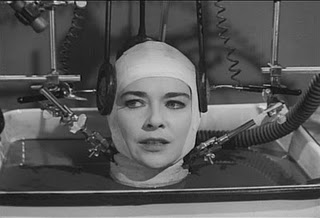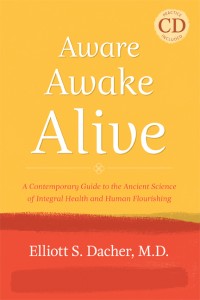 [See parts 1, 2, 3, and 4 of the series]
[See parts 1, 2, 3, and 4 of the series]
It is important not to mistake the distinction between alienation and authenticity as a condemnation of the particular techniques that have supported the success and progress of a scientifically and technologically driven modern world. These techniques are, in-and-of-themselves, of neutral value. It’s the ways in which we integrate various techniques into our lives (the technology) that can either lead us either toward disconnection and diminished awareness or into levels of greater conscious connection and deeper self awareness, and these ways of responding to the challenges of life are shaped very early.
Beginning with the ways parents hold and touch their children, infants are learning how “to be” physically in the world. As they learn to mimic adults’ behavior, children are further educated on how to move and how not to move. Despite the potential for differences in this early upbringing, most young children are energetic, highly mobile, flexible, and authentically expressive beings. As children enter school, however, these tendencies are actively shaped like never before. As most of us have been schooled, children are typically made to sit in rigid desks for long periods of time. They must learn to ignore their natural inclinations as to how to move their bodies physically and express themselves verbally, expressing themselves only when some authority deems it acceptable and only in ways that are deemed acceptable. A child’s experience of fatigue, hunger, and excitement are brought into alignment with the pre-determined structure of the school day. Even during set periods for “free” expression, children are taught the “right way” to do everything, from throwing a ball to drawing a picture. Since kids’ developing sense of self-esteem is so wedded to the positive reinforcement they get for doing things “right,” expressing oneself in idiosyncratic ways is often met with discouragement from authority and ridicule from peers.
While peer groups exert relentless pressure to conform to the status quo, in the classroom bad grades are meted out to those who fail to do things “correctly,” and sometimes even physical punishment awaits those who allow their restlessness and bodily tensions to sneak out into their behavior. This training prepares children for life after school, where the organic rhythms of the body are regulated to fit the needs of the typical work situation. Food is eaten during a set lunch hour, one goes to the bathroom during scheduled breaks, and the range of overall body movement conforms to the prescribed limits of the given work setting. Johnson, in his book Body, summarizes this whole pattern of body-shaping as follows:
From infancy through old age we are taught to conform our bodies to external shapes. We learn to perform physical activities in specifically prescribed ways. We are rewarded for keeping quiet and controlling our bodily impulses. The implied meaning of these recurrent nonverbal messages is consistent with the explicit teachings: our bodies, with their feelings, impulses, and perceptions, are not to be trusted, and must be subjected to external controls to keep them from leading us astray. They must be trained to support the status quo.
The technology of alienation encourages individuals to exist in a state of continual repression, a dissociated state which truncates one’s depth of awareness as well as one’s range of responsiveness. This state of disembodiment manifests not only in a diminished and deadened sense of self, but also necessarily disembodies one’s relationships to others. Since we experience all situations in our lives with, through, and as bodily beings, to be dulled to our own bodily senses and feelings is to be dulled to the feelingful aspects of any relationship or situation we find ourselves in.
The dimension of consciousness that an alienated individual loses touch with is what humanistic psychologist Sidney Jourard called “somatic perception.” Jourard pointed out that people respond to all situations on a bodily-felt level, and that by perceiving subtle changes in the state of one’s bodily being, one can sense when a situation either enhances or diminishes the quality of one’s life. It’s on this embodied level that a little girl can tell which of the smiling adults in a room actually doesn’t like her; that we just “know” something is troubling a loved one, no matter how hard they try to hide it; that we simply get good or bad “vibes” about a particular situation. As a person loses the capacity to discern how situations affect him or her as an embodied being, it becomes all too easy to continue ways of living and relating that are not in one’s best interests. As Jourard put it:
When we repress the experience of our bodies, we not only reduce our experience of being alive, but, in order to protect ourselves from threatening pleasure and pain, we actually create circumstances by which we become stupid, that is, uninformed, in a peculiar, somatic way.
Thus, to the degree one lacks embodiment, one is ignorant of how to live situations in an authentic way.
As Johnson reminds us, authenticity is a word of Greek origin that originally meant “to do something oneself, to have a sense that one’s actions and feelings are one’s own.” When a person has a well-developed capacity for somatic perception, one is better suited to be one’s own authority on how to live in growth enhancing ways. This “sensual authority,” as Johnson calls it, comes directly from one’s sense of embodiment, and is precisely what is stripped away via the technology of alienation. When access to somatic perception is dulled, people progressively lose the necessary depth of awareness to possess a clear sense of how to be and what to do in life. As Johnson describes it:
The technology of alienation accustoms us to sense a void between ‘I’ and my flesh, and between ‘I’ and ‘you’. Because we are led to feel that we are not in immediate contact with the palpable world, we sense that we need experts who understand that world enough to tell us what to do.
Alienated from our embodied experience of self and world, we give doctors authority over our bodies, psychologists authority over our minds, outside mediators authority over our interpersonal disputes, governments authority over our environmental policies and actions, and religious leaders authority over our spirits. The shift from alienation to authenticity requires that individuals develop their impoverished self-sensing capacities and that they learn to check the dictates of outside authorities against this growing base of awareness.





